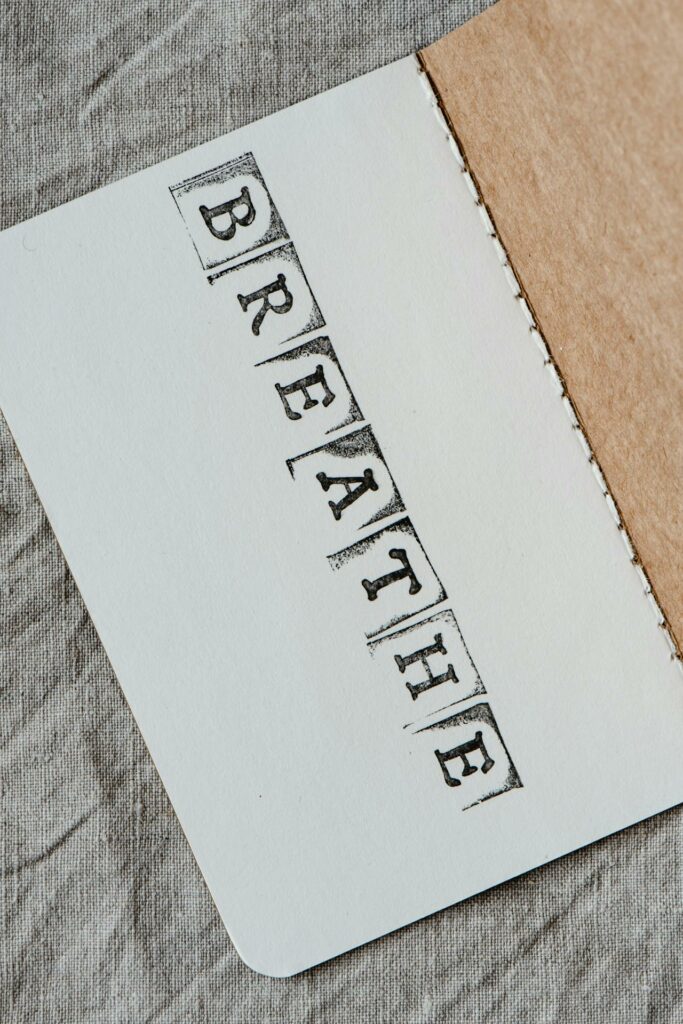The Path to A Less Anxious Mind and Body (Part Two)
In the previous post, I discussed the impact of thoughts on anxiety, and now want to discuss the part 2 of the misery trifecta – the body.
In recent years, therapy interventions that focus on the body have become much more popular. Many people have heard of the book The Body Keeps The Score by Bessel Van der Kolk, and have maybe heard of polyvagal theory or Somatic Experiencing. Therapeutic techniques or theories that focus on the body and the nervous system are considered “bottom up” because they focus the body and then brain, and there is much to gain from the bottom up, body focused perspective.
The way I like to think of it is that the mind and the body are continuously influencing each other – if we have upsetting experiences or thoughts, our body responds with tension, increased heartrate etc. Then the mind notices that the body is exhibiting anxious arousal and thinks “Oh crap! There must be a problem!” and focuses on looking for the problem to be alarmed about. It’s useful to practice settling the body using nervous system, because doing so nudges the mind and body to switch more into relaxation mode.
Basic body/somatic practices I use with clients include breathwork, body scan, and polyvagal massage. (More on polyvagal theory and practice in another post). While doing any of these practices can immediately provide a bit of relief, none of these are instantaneous and permanent fixes. Like building any kind of habit, these take practice and consistency. My analogy is that you can’t expect to go from being sedentary and out of shape one day, and then competing in a triathlon the next day. We need to practice and gently build that muscle. The good news is that we don’t have to go to the gym and sweat for hours! These practices are easy, and really take just minutes a day to start.
A word of caution, however. For people who are extremely anxious and/or have significant trauma histories, “relaxing” may feel unsafe and abnormal, so working with a therapist skilled in helping people regulate their nervous systems while learning to be less anxious is a good idea.

Breathing
We all do it. Most of us aren’t doing it well. As with beginning to notice our thoughts, breathwork begins with noticing our breathing, especially if we are holding our breath or breathing shallowly. It’s normal to hold our breath when we are anticipating something or are scared. It’s also unhelpful. Just learning to check for breath-holding and correcting that with a few deep, slow breaths is very good start. Regular daily practice of simple breathwork is solid gold. Check out the youtube 2 minute “bubble breath” exercise in the resource section of my website. There are tons of these out there to choose from. Find one that appeals to you.
I also love the Breathly app. It’s free, easy to access from an icon on your phone and super-easy to do. Just tap open the app, choose from a few settings and watch the expanding and contracting image that lets you effortlessly follow the breathing pattern. For those not familiar with breath work, starting with the 4-4-4 breath is best. If you notice you get breathless or lightheaded when practicing, this is proof that you need to breath better! Go gently and build those literal muscles, explore the feeling of expanding the ribcage and diaphragm with breath.
I recommend choosing a time each day, even setting an alarm, to do the few minutes of breathing practice. I have had clients who found gifs to put on their computer desktop at work and found that extremely helpful.
Body scan
The body scan is a mindfulness meditation that involves simply noticing sensations in the body as they are occurring. This is my favorite way of settling the nervous system, and it is so simple to do. It has a two-fold purpose – getting literally “out of our heads” and into our bodies and being in the present moment. Us anxious folks tend to be stuck in our heads, ruminating over past events, or worrying about the future. We are often disconnected from our bodies.
We cannot simultaneously be attending, with curiosity and interest, to what sensations we can observe in our left foot and be worrying about tomorrow. We certainly will find ourselves having drifted off the path and not paying attention to the sensation in our foot, but this is not a failure, it’s simply part of the process. This is a great practice to try laying down, maybe before bed. Just search “10 minute body scan” on YouTube and find one that appeals to you.
Polyvagal massage
Another effective, simple way relax the nervous system. I won’t bother to try and explain it in this post, just know that these practices are intended to cue your nervous system to the “rest/digest” mode instead of the “fight/flight/freeze” mode. And again, they are easy and take just minutes. I recently found this therapist and youtube content creator, Calm with Kyle. I have personally had good results using these techniques, and my clients are finding benefit as well. Just give them a try for things like chronic tension in the jaw and face and overall tension. These are simple, gentle massages of the face and ears. Here is a starter video to check out.
In the next post, I will round out the trifecta of anxiety-perpetuating factor, and discuss the involvement of behaviors and habits on anxiety.
